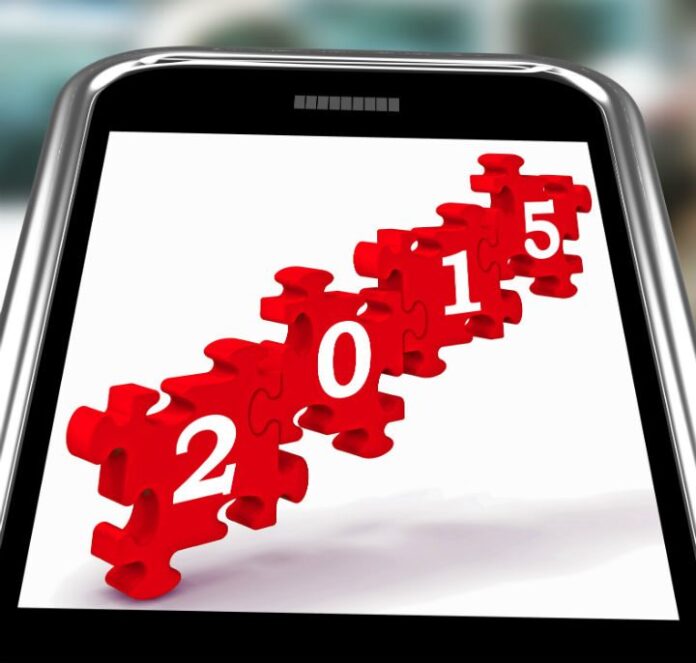Long before the Internet and Wi-Fi were mainstream, prestigious hotels provided complimentary Wi-Fi service in public areas, such as the hotel lobby, and wired Internet connections in guest rooms. As the Internet and Wi-Fi became part of everyday life, existing solutions – which required a great deal of time and cost to support – were unable to accommodate the increasing number of devices and bandwidth requirements or guest expectations for pervasive Wi-Fi availability. When guests began to carry smartphones and tablets as well as laptops, these devices could not connect to the Internet in the room because of the lack of wireless options. In addition, the increased number of devices per person quickly overwhelmed the existing Wi-Fi network in other areas of the hotel, resulting in poor wireless performance. This massive influx of mobile users, devices and connected things are everywhere – from manufacturing plant floors to retail shop floors – and growing every year.
Prediction No. 1
In the hospitality industry, 802.11ac will go mainstream to serve locally hosted repositories of rich multimedia and entertainment on a guest’s device rather than through the in-room television. As the tsunami of wireless data applications tests the generous capacity offered by 802.11n, more networks are pushed to adapt 802.11ac for the foreseeable future in 2015. The hospitality industry is certainly following this path. As the .11ac upgrade cycle is catalyzed by the availability of new end-user devices such as smartphones and tablets with .11ac capabilities, the wireless local area network market will continue to expand exponentially. IDC’s prediction of 1.4 billion smartphone shipments in 2015 fuels the explosion of rich multimedia and entertainment offerings on a guest’s device. Wi-Fi quality of service is also positioned as the central criteria behind the guest selection and perception of hotels – an essential requirement to maintain a competitive edge in the hospitality industry.
Prediction No. 2
Pockets of “Internet of Things” solutions will occur in high-value manufacturing floors as the emergence of technology in that industry has changed the face of operations. Supervisory control and data acquisition systems in industrial processes in conjunction with IoT will introduce significant cost reductions in manufacturing operations, utilizing WLAN for interconnectivity, manufacturing and distribution. As reported by Gartner, the IoT-installed base will reach 26 billion by 2020, with incremental revenue exceeding $300 billion.
A new era of computing technology is here and will offer connectivity to a vast number of smart “things” interacting and communicating with each other on manufacturing floors to generate a tremendous volume of useful data with the potential to increase efficient operations and positively impact every aspect of the manufacturing life cycle. This interaction and exchange of data between machines is no longer pivotal on smartphones alone. Rather, any object and appliance on the manufacturing floor, once connected, will generate data to streamline every aspect of the manufacturing process. The objects on a manufacturing floor can become smart with the integration of embedded processors, and once they become smart, the next step is the need for remote communication. Wi-Fi is among several connectivity technologies such as NFC, Sub-Gig, ZigBee, GPS, BT/BTLE, RFID and cellular. Once the connectivity is established, the automation of processes will follow.
Prediction No. 3
Indoor location-based services, driven by beacons and mobile payments, will boost shopper marketing initiatives. According to Forrester, mobile reached a tipping point in 2014 as it solidified its position as one of the most disruptive technologies for businesses in decades. Apple revolutionized payments through its launch of Apple Pay, Wal-Mart launched a savvy consumer app and beacon technology has popped up everywhere from Macy’s to airports. We also saw mobile usage of social media overtake desktop usage. Mobile-centric Instagram grew to over 300 million active users. And 42% of the total population globally will own a smartphone by the end of 2015, according to Forrester. So what then can we expect in 2015? Mobile will continue to ride this wave of momentum.
In 2015, the smartphone will finally become “smart” – understanding and connecting context and data among apps to create unique, personalized experiences, and always-connected consumers will take their business elsewhere if it is not understood where they are and what they want. Consumers expect to engage with brands to get any information or service they desire immediately and in context. Today, 18% of U.S. online consumers have this expectation, while 30% are in the midst of a transition to this mobile mind shift. As many of us know, location-based marketing centers on data. In 2015 and beyond, marketers will be able to use data to develop relevant, contextual and engaging experiences for their consumers and use that data to predict which locations and segments will be most responsive to which campaigns and programs in the future. This shift will provide a richer, data-driven approach that puts information into action.
Editor’s Note: With 2015 now upon us, RCR Wireless News has gathered predictions from leading industry analysts and executives on what they expect to see in the new year.
Photo copyright: / 123RF Stock Photo

